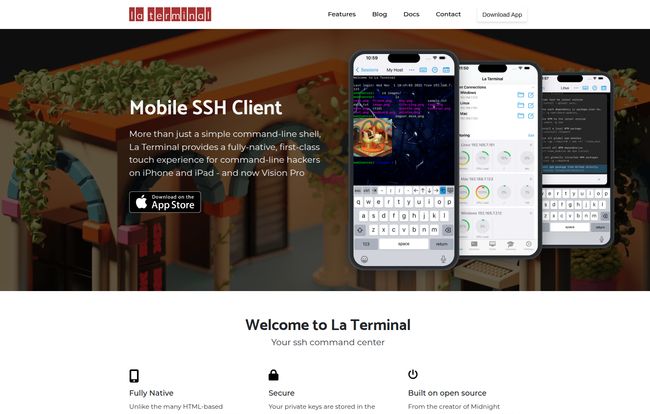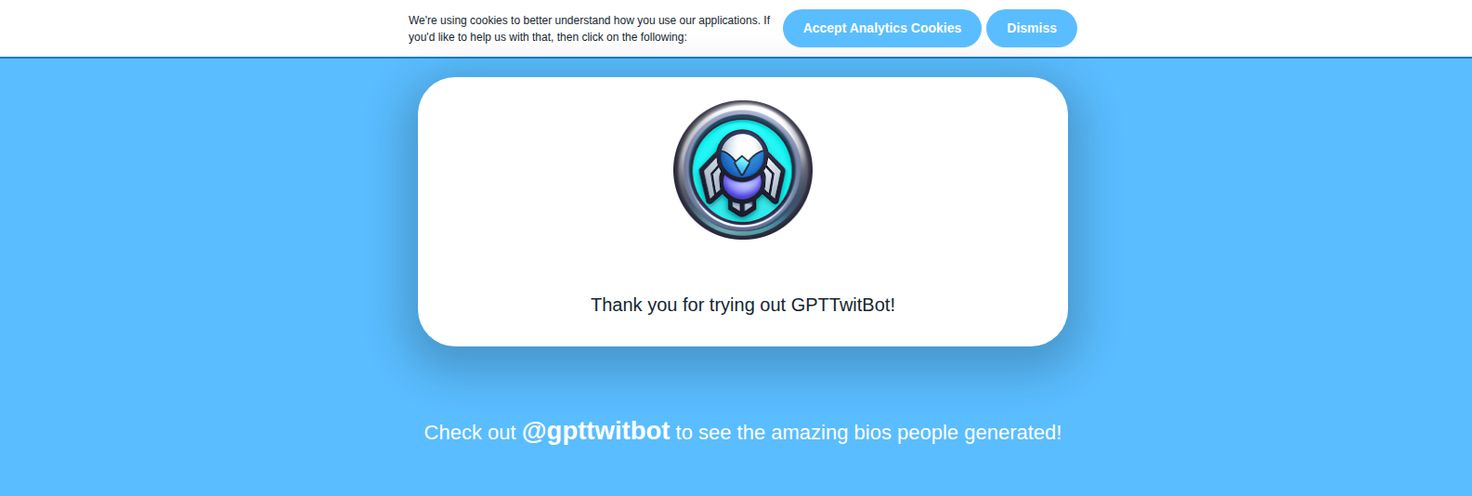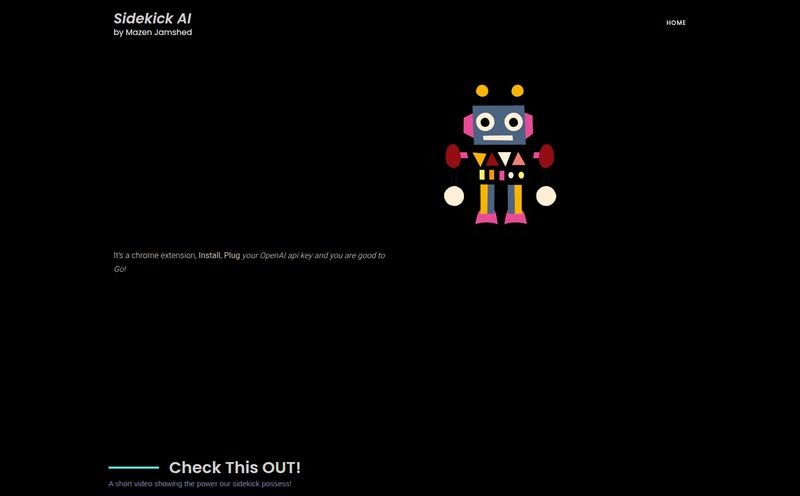For years, managing servers from an iPhone or iPad has been... a compromise. We’ve all been there, right? You get an urgent PagerDuty alert while you’re in line for coffee, and you're forced to wrestle with some clunky, half-baked SSH client that feels more like a poorly rendered webpage than a native tool. It's frustrating. The lag, the awkward controls, the constant fear that a stray tap will close your session. For a long time, mobile SSH has felt like wearing shoes that are two sizes too small. Functional, maybe, but painful.
So when I stumbled across La Terminal, I was immediately skeptical but also incredibly intrigued. It bills itself as a "fully native" SSH client for the entire Apple ecosystem—iPhone, iPad, and even the shiny new Vision Pro. A native client? Not another HTML5 wrapper disguised as an app? The promise alone was enough to get my attention.
What Makes La Terminal Different from the Rest?
The keyword here, the one that made me sit up and pay attention, is native. Most of the terminal apps you'll find on the App Store are, to put it bluntly, web apps in a container. They work, sure, but they lack the snap, the responsiveness, the deep system integration of a true native application. La Terminal is built from the ground up for iOS, iPadOS, and visionOS. It's like the difference between a custom-tailored suit and an off-the-rack one that 'mostly' fits.
This native approach has some serious perks. The performance is crisp. But more importantly, it allows for things like storing your precious private keys directly in the Apple Secure Enclave. For those of us who live and breathe security, that's a massive deal. It’s a level of security that a web-based tool just can't touch. It means your keys are protected by hardware-level encryption, giving you some actual peace of mind.
The Features That Actually Matter to a Power User
Okay, so it's native and secure. That's a great start. But a pretty interface is useless if the features aren't there. I've been burned before by apps that look great but fall apart under a real workload. Thankfully, La Terminal seems to have its priorities straight.
The Built-in SFTP is a Legitimate Game-Changer
I can’t tell you how many times I've had to SSH into a box, then switch over to a completely separate FTP client to move a file, then switch back. It's a clunky workflow that drives me nuts. La Terminal has a built-in SFTP file manager, and it’s not just an afterthought. Based on their site, it looks like a proper, integrated tool. The ability to manage files, drag-and-drop, and handle transfers without leaving the terminal session? That's not just a feature; that’s a quality-of-life improvement. This is based on a fork of the legendary Midnight Commander, so it has a solid open-source foundation.

Visit La Terminal
AI Assistance That Doesn't Feel Like a Gimmick
I know, I know. Slap "AI" on anything and its valuation triples. I'm as tired of the buzzword as you are. But La Terminal's implementation, which they call "Command Search," actually sounds useful. It’s designed to help you find and construct complex commands. Think about all those times you've forgotten the exact syntax for a particularly nasty `find` or `awk` command. Instead of frantically Googling on your phone's browser, you can get AI-powered help right in the terminal. I see this as a smart copilot, not an autopilot—it helps you do your job better, it doesn't try to do it for you.
Small Touches with Big Impact: Eye Candy and Monitors
Let's talk about the little things. The app includes "Eye Candy" – live-effect backgrounds powered by Apple's Metal framework. Is it necessary? Nope. Is it cool? Absolutely. Working in a terminal that has a subtle, dynamic background is just a more pleasant experience. It's a small detail that shows the developers actually care about the user experience.
More practically, it includes resource monitors. You can get a live graph of your server's CPU and memory usage with a simple command. This is fantastic for quick health checks without having to run `htop` or parse the output of `free -m`. It's another one of those things that streamlines your workflow, even if it only saves you a few seconds at a time. Those seconds add up.
iCloud Sync is the Unsung Hero
If you're invested in the Apple ecosystem, this is huge. La Terminal syncs all your hosts, private keys (securely, of course), and settings across your iPhone, iPad, and Vision Pro using iCloud. Set up a new server connection on your iPad at your desk, and it’s right there on your iPhone when you're on the move. No re-entering IP addresses, no exporting and importing keys. It just works. This is the kind of seamless integration that makes using Apple hardware so compelling, and it's great to see a pro-level app take full advantage of it.
SSH in the Metaverse? The Vision Pro Angle
I have to admit, the idea of using this on a Vision Pro is pretty wild. Imagine having a massive, floating terminal window right in your living room. Or pinning multiple sessions around you to monitor logs, run commands, and manage files simultaneously. While it might sound like science fiction, it's a genuinely powerful use case for spatial computing. For a network engineer troubleshooting a complex issue or a developer managing a microservices deployment, having that kind of screen real estate and spatial organization could be incredible. It moves the terminal from a small, constrained box into an infinite workspace. I'm excited to see how that pans out.
The Good, The Bad, and The Pricey?
So, let's break it down. On one hand, you have a fully native, highly secure SSH client with a built-in SFTP manager, smart AI assistance, and flawless iCloud sync. It's clearly built by people who understand the pain points of command-line work on mobile devices. It supports international character sets and is aware of what platform you're connecting to, be it Linux, a Mac, or even a Raspberry Pi.
On the other hand, this is a tool for professionals. If you dont know what SSH or `ls -la` means, this obviously isn't for you. As for the price... well, that's a bit of a mystery. I went to find their pricing page, and it seems to be taking a siesta—I was greeted with a classic Error 404. My guess? We're probably looking at a premium one-time purchase or a reasonable annual subscription. And honestly, for a tool this polished and powerful, I'd happily pay. The amount of time and frustration a good client can save is worth its weight in gold.
So Who is La Terminal Actually For?
This app is tailor-made for a specific crowd: the sysadmin who needs to reboot a server from their kid's soccer game, the developer who needs to check logs on the train, the network engineer debugging a firewall rule from a hotel room, or the hobbyist tinkering with their home lab of Raspberry Pis. It's for anyone who lives in the command line and has felt constrained by the tools available on mobile.
It's not for the casual user. It’s a power tool for power users, and it doesn't apologize for that. And I respect that a lot.
Frequently Asked Questions About La Terminal
1. Is La Terminal a free app?
It's not entirely clear from their website. The app is available on the App Store, but premium features might require a one-time purchase or a subscription. Given the professional feature set, a paid model is very likely.
2. How is La Terminal different from apps like Termius or Blink Shell?
The biggest differentiator is its claim of being a 100% native application, which should result in better performance and deeper integration with Apple's ecosystem (like using the Secure Enclave and native Vision Pro support), whereas many alternatives have roots in web technologies.
3. Is it safe to use La Terminal with my private server keys?
Yes. La Terminal states that it stores private keys in the Apple Secure Enclave, which is a hardware-based key manager isolated from the main processor. This is one of the most secure ways to store sensitive data on an Apple device.
4. Can I use La Terminal to manage a Raspberry Pi?
Absolutely. The app is described as "Host Platform Aware," and is perfect for managing any SSH-enabled device, including Raspberry Pis, home servers running Linux, or cloud instances.
5. Does the AI assistant write all my commands for me?
No, it's more of a smart assistant. It helps you search for and generate commands when you need help with syntax or options. You still need to understand what you're doing, but it can be a huge time-saver for complex or rarely used commands.
My Final Verdict: Is It Worth The Download?
From everything I've seen, La Terminal looks like the mobile SSH client I've been wanting for years. It's thoughtful, powerful, secure, and built with a deep understanding of what technical professionals actually need. It ditches the clunky web-based approach for a true native experience, and that alone is worth celebrating.
If you've ever felt the pain of trying to manage a server from your phone, I think La Terminal is, at the very least, worth a serious look. It might just be the tool that finally makes on-the-go sysadmin work not just possible, but actually pleasant. I'm definitely grabbing it from the App Store for my next on-call shift.



